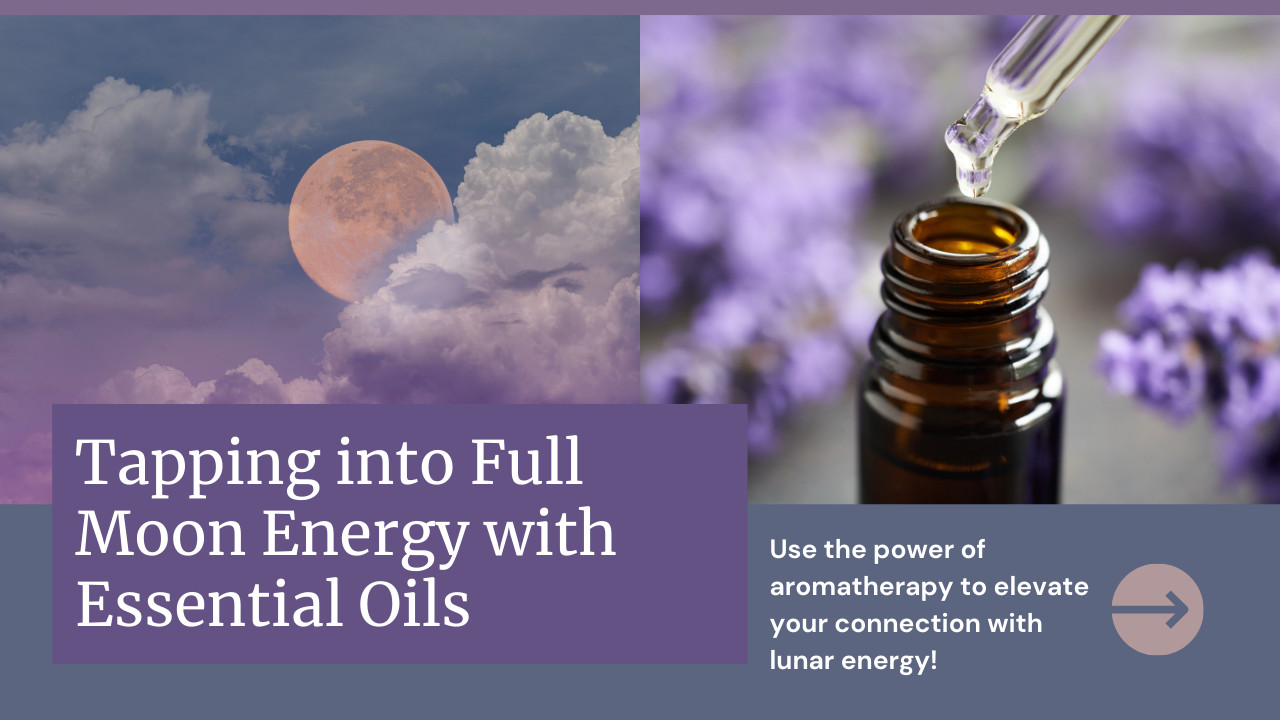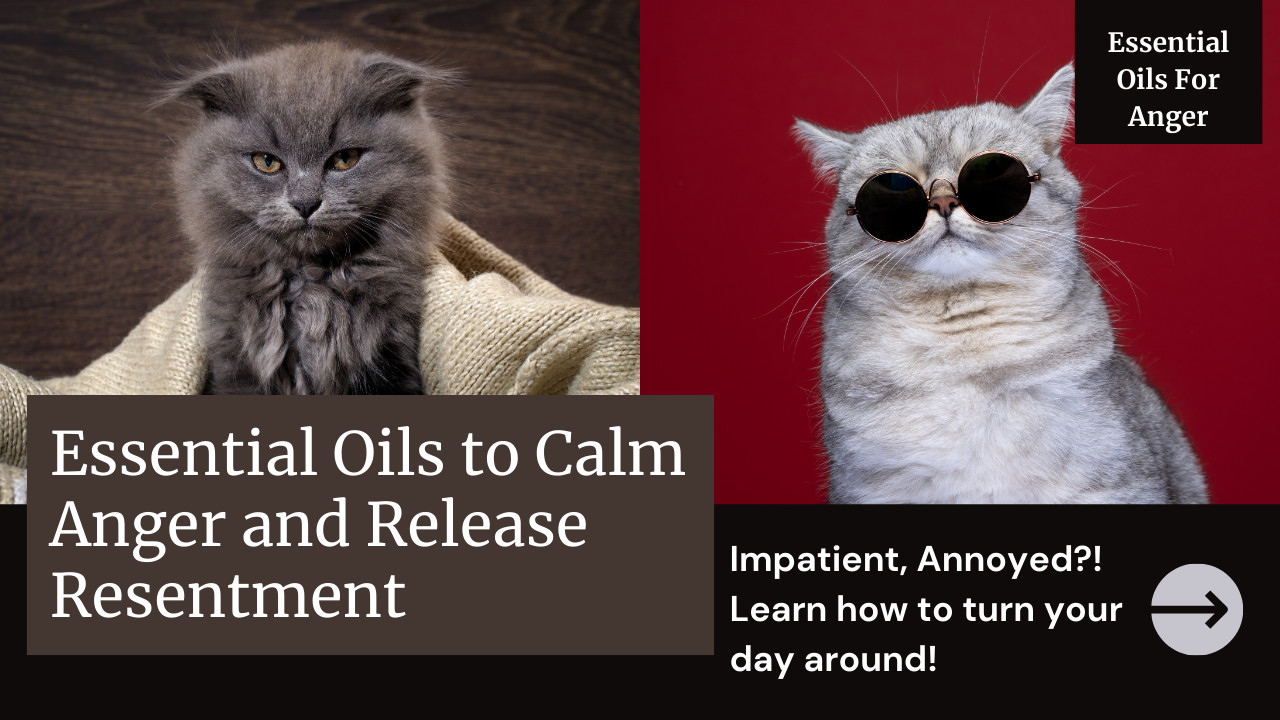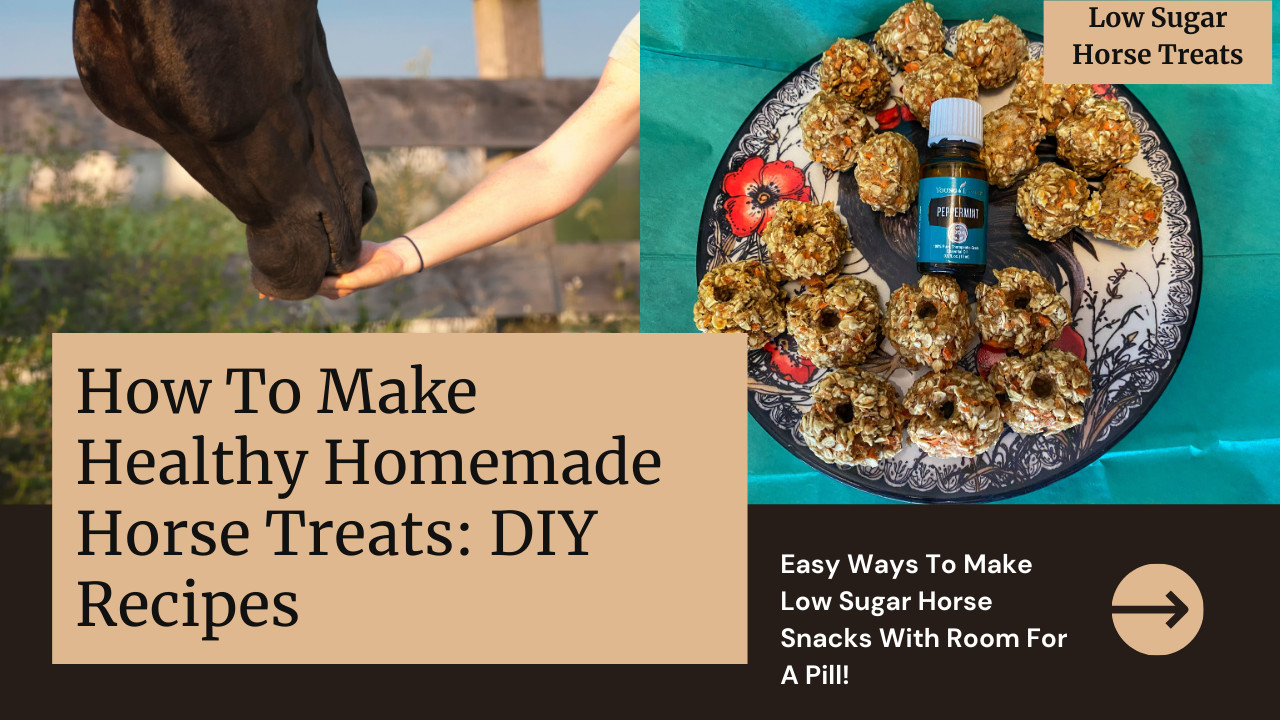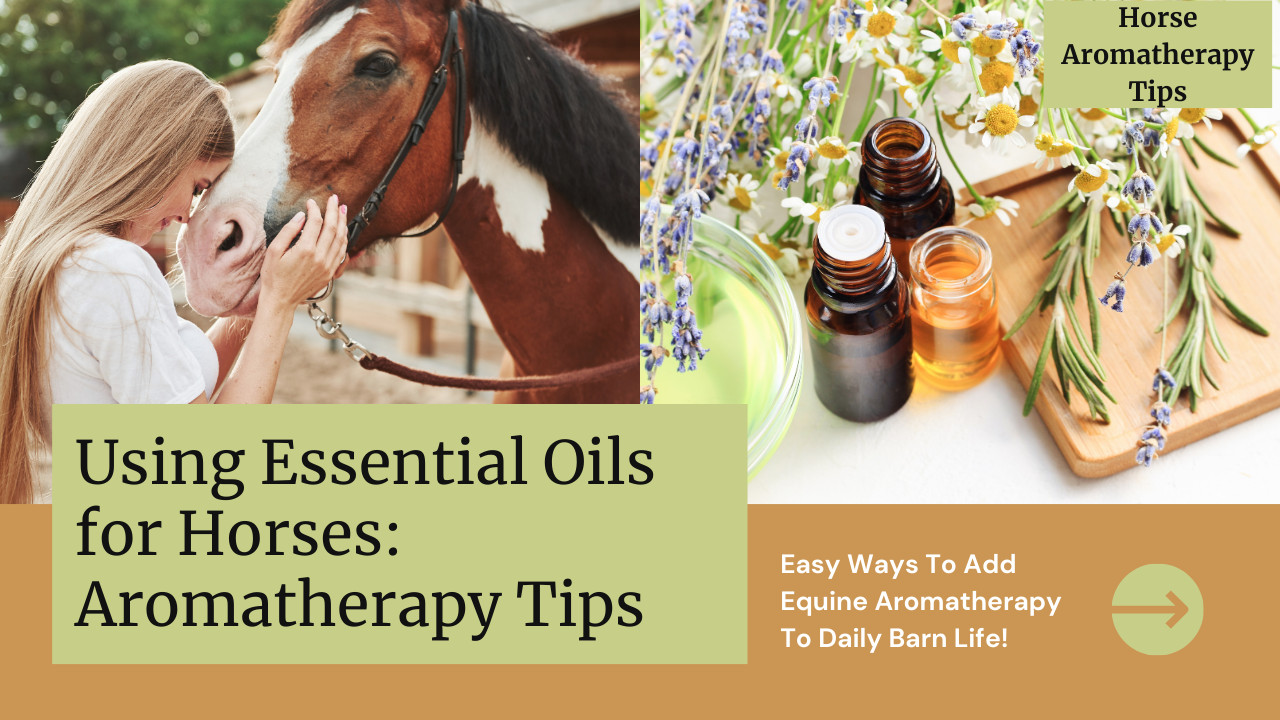
Have you ever noticed how your energy shifts around a full moon? Sometimes I find it hard to sleep, feeling a bit of restlessness in the air, as if the world is buzzing with an electric charge. This got me thinking about how the moon is part of the cycles and rhythms that affect our planet. Instead of going through life disconnected from these natural forces, what if we could work with the full moon's energy—and enhance it with aromatherapy—to promote harmony, connection, and greater insight? This idea has been a fun project I’ve been exploring lately, and I'm thrilled to discuss how essential oils can help us align with the energy of the full moon, enhancing its effects rather than feeling disconnected or resistant.
The Significance of the Full Moon
The full moon has captivated human imagination and spirit for centuries. Historically, it has held profound significance across various cultures, symbolizing completion, illumination, and a peak in lunar energy. From ancient lunar deities to modern spiritual practices, the full moon has been a time for reflection, celebration, and intention-setting.
Understanding the Energy of the Full Moon
As the moon reaches its fullest phase, its energy peaks, amplifying emotions and insights. Many people report feeling more creative, intuitive, or even restless during this time. This heightened energy can be a powerful tool for personal growth, allowing us to tap into deeper levels of understanding and connection with ourselves and the world around us.
The Science Behind the Full Moon
Scientifically, the full moon occurs when the Earth is positioned between the sun and the moon, illuminating the moon’s entire face. This celestial event influences tidal movements and may even impact biological rhythms, although the exact effects on human behavior are still a topic of debate. Regardless, the full moon's presence in our night sky has inspired countless myths and stories, showcasing its influence on our lives.
Essential Oils and the Full Moon
Aromatherapy can be a fantastic way to align with the full moon's energy. Essential oils amplify this lunar power, enhancing our emotional and spiritual experiences. By using essential oils to work with the energy of the moon, we create a deeper connection to the energy surrounding us. For instance, if our intentions are to use the energy of the full moon for manifestation, incorporating essential oils can amplify our efforts and increase the power of our intentions.
The energy of the full moon amplifies what we feel in our mind, body, and spirit. This is a powerful time to harness that energy to support our self-care practices, allowing us to shine more brightly. By taking time to express gratitude, we acknowledge the positive aspects of our lives while letting go of what no longer serves us. This reflective process empowers us to work toward our best life, aligning our intentions with the abundant energy of the full moon.
The essential oils that will resonate most with you will depend on your personal journey and intentions. As the lunar cycle progresses from the new moon to the full moon, energy builds and momentum increases, making it an ideal time to focus on action, manifestation, and celebration.
Conversely, as the full moon starts to wane, it becomes a period for reflection and release. Take a moment to ask yourself what your intentions are and what energy you’re feeling. By choosing the right essential oils, you can amplify those emotions and support your journey. Below is a list of some of my favorite oils and the energies they can help create.
Essential Oils for the Full Moon
- Lemongrass: Purification, cleansing, and clarity. Great for clearing negativity.
- Orange: Energy, creativity, and abundance. Uplifting, making it ideal for manifestation.
- Sage: Intuition and wisdom. Excellent for spiritual insight and clarity.
- Lavender: Calm and relaxation. Promotes peace and emotional balance.
- Frankincense: Spiritual connection. Known for deepening meditation and enhancing spiritual practices.
- Patchouli: Grounding and balance. Supports emotional stability and connection to the earth.
- Rose: Emotional healing. Enhances self-love and compassion.
- Peppermint: Clarity and focus. Invigorating, helpful for enhancing mental clarity.
- Geranium: Harmony and balance, self-love. Promotes emotional healing and nurturing.
- Sandalwood: Grounding and focus. Deepens meditation and spiritual practice.
- Bergamot: Embracing oneself, fostering a positive outlook, and cultivating inner strength.
- Clary Sage: Emotional balance, enhancing intuition and perspective. Great for connecting with inner wisdom.
- Cypress: Go with the flow and adaptability. Supports flexibility and change.
When selecting an essential oil from the list, consider your specific needs and intentions. Sometimes, I like to use a blend to harness the frequencies of multiple oils for a more profound effect. Below are some blends I’ve found helpful in my practice. However, trust your intuition—great results can also come from using just one oil, so do what you feel called to do.
Full Moon Blends for Different Outcomes
- For Clarity and Focus: Mix Lemongrass, Peppermint, and Clary Sage.
- For Creativity and Inspiration: Combine Orange, Frankincense, and Cypress.
- For Intuition and Wisdom: Blend Sage, Lavender, and Clary Sage.
- For Emotional Healing: Try Bergamot, Lavender, and Rose.
How to Use Essential Oils for the Full Moon
Essential oils can be used in various ways during the full moon:
- Diffusing: Add to a diffuser to create an atmosphere that resonates with the energy you wish to cultivate.
- Topical Application: Dilute with a carrier oil and apply to pulse points, or create a rollerball blend for easy use.
- Meditation: Use during meditation to enhance focus and intention.
- Journaling: Incorporate essential oils into your journaling practice by selecting an oil that aligns with your journaling focus.
As the full moon approaches, I enjoy creating a vision board. While I work on it, I diffuse orange for energy and abundance, rose to remind myself of my worth, and sandalwood to promote grounding and focus.
The full moon offers a unique opportunity to harness its energy for personal and spiritual growth. By incorporating essential oils into the energy of the full moon, you can amplify their effects and deepen your connection with this powerful lunar phase. So the next time the full moon shines brightly in the sky, take a moment to reflect, set intentions, and embrace the energy it brings.
Feeling inspired to work with the full moon’s energy? Create your own essential oil blends and share your results with us!

Differences between Jade Lemon and Lemon Essential Oils
Key Characteristics Comparison
| Feature | Jade Lemon | Lemon Essential Oil |
|---|---|---|
| Aroma | Sweeter, lemon-lime scent | Brighter, sharper citrus scent |
| Cost | Generally more expensive | More budget-friendly |
| Primary Uses | Culinary, emotional support, spiritual | Everyday cleaning, general wellness |
| Unique Properties | High d-limonene content, distinct aroma | Classic lemon scent, cost-effective |

Lately, life has been throwing a lot my way. From the moment I wake up, it's been one thing after another—getting stuck in traffic, feeling impatient in line at the store, and generally being on edge. I didn't realize at first that these were all signs of anger manifesting in small, but impactful, ways. It wasn't until I noticed how these feelings were affecting my mood and interactions that I decided to do something about it. That's when I turned to essential oils.
Anger is a natural emotion, but when it gets out of control, it can harm your personal relationships and overall well-being. Luckily, the use of essential oils can help manage these intense feelings. Essential oils have been used for centuries to support emotional balance and offer natural remedies for negative emotions. In this blog, we'll explore the best essential oils for anger management and how to use them effectively.
Did you know that anger can be contagious? Research suggests that being around angry people can actually increase your own feelings of anger, leading to a ripple effect of negative emotions. This makes managing anger not just important for your own well-being, but also for those around you, including your pets.
Just like humans, horses and dogs can experience emotions like anger and irritability. When our animal companions exhibit signs of agitation or frustration, it's essential to address their emotional well-being. Using essential oils can be a gentle and effective way to support their emotional balance. However, it's crucial to first look for any underlying physical causes, as these can often manifest as emotional issues. Once any physical issues have been ruled out or addressed, incorporating essential oils into their routine can help create a happy companion in the long run.
Like our animal friends, addressing any underlying physical causes is essential when dealing with our anger. Once any physical issues have been ruled out or addressed, incorporating essential oils into your routine can be a gentle and effective way to manage intense feelings.
Understanding Anger and Its Impact
What is Anger?
Anger is a powerful emotional response to perceived threats, injustices, or frustrations. It can manifest in various ways, from mild irritation to intense rage. While anger itself is a natural and sometimes necessary emotion, chronic or unmanaged anger issues can lead to physical and emotional health issues. Irritation is a milder form of anger and can often build up over time if not addressed, impacting our emotional balance and well-being.
Just like humans, horses, and dogs can experience a range of complex emotions beyond anger, such as jealousy. One of my dogs, for example, can be quite the grinch when she's not the center of attention. Recognizing and addressing these emotions is key to their well-being. Essential oils can play a supportive role in managing these emotions. I've personally used essential oils to help my dog cope with feelings of jealousy, and it's made a noticeable difference in her behavior.
The Liver and Anger
In traditional Chinese medicine (TCM), the liver is associated with the emotion of anger. According to TCM, the liver's primary function is to ensure the smooth flow of Qi (energy) throughout the body. When the liver's function is disrupted, it can lead to stagnation of Qi, resulting in feelings of frustration, irritability, and anger. By supporting liver health, we can help manage anger and promote emotional balance.
When to Seek Professional Help
While essential oils can be a helpful tool for managing anger, it's important to recognize when to seek the counsel of a qualified health professional or psychiatrist. Deep emotional issues, such as persistent anger and resentment, may require professional treatment. Essential oils are one of many tools available to support emotional health, but they should be used in conjunction with other holistic and professional approaches when necessary.
Holistic Modalities for Anger Management
- Deep Breathing Exercises
Deep breathing exercises can help calm the mind and reduce anger. Practice inhaling deeply through your nose, holding your breath for a few seconds, and exhaling slowly through your mouth. This technique helps activate the parasympathetic nervous system, which can lower heart rate and blood pressure, promoting a sense of calm. Incorporate essential oils like lavender or ylang ylang for added relaxation. - Mindfulness and Meditation
Mindfulness and meditation practices can help you become more aware of your emotions and manage them effectively. Use essential oils like vetiver or patchouli during meditation to enhance their grounding effects. - Physical Exercise
Regular physical exercise is a great way to let go of anger and stress. Activities like yoga, tai chi, and qigong can help balance your energy and promote a sense of calm. - Massage Massage is a powerful tool for managing anger, and as a massage therapist, it's one of my go-to methods for managing my emotions. A relaxing massage can reduce muscle tension, activate the relaxation response, and lower heart rate and blood pressure, all of which can help reduce feelings of anger and irritation. If your dog or horse is showing signs of grumpiness, there may be a physical ailment at play. For example, my own dog's grumpiness was due to his hip arthritis acting up. Massaging his joints helped alleviate pain and inflammation, making him a happier camper.
- Herbal Remedies
Herbal remedies such as milk thistle and dandelion can support liver health and help manage anger according to TCM principles. Consult with a qualified herbalist for personalized recommendations. - Emotional Freedom Techniques (EFT)
EFT, also known as tapping, involves tapping on specific acupressure points while focusing on negative emotions. This technique is believed to help release emotional blockages and promote emotional balance. Try combining this with an essential oil like Frankincense or Orange.
Now, let's dive into how essential oils can be a powerful tool in managing anger and irritation.
Understanding Essential Oils
What Are Essential Oils?
Essential oils are concentrated extracts derived from the leaves, flowers, stems, and roots of plants. These oils capture the plant's natural fragrance and beneficial properties. Each essential oil has unique chemical components that contribute to its wellness effects. For example, lavender essential oil is known for its calming properties, while peppermint essential oil is invigorating and refreshing.
Why They Work on Our Emotions
The power of essential oils lies in their ability to affect our emotions through the sense of smell. When we inhale the aroma of an essential oil, the scent molecules travel through the olfactory system and directly impact the limbic system in the brain. The limbic system is responsible for controlling emotions, memories, and arousal. By stimulating this part of the brain, essential oils can help regulate our mood and emotional responses.
Not all essential oils are created equal, which is also the number one safety factor when using them with our pets. When choosing essential oils, it's important to look for purity and quality. I personally invite you to explore the essential oil company I recommend, as I have visited the farms, helped plant, harvest, and distill the oils myself. This hands-on experience ensures that I am purchasing high quality, pure essential oils. Knowing the source of your essential oils can provide peace of mind and confidence in the products you use for yourself and your fur kids. Click HERE to check them out.
The Best Essential Oils for Anger Management
1. Sweet Orange Essential Oil (Citrus aurantium)
Sweet orange oil is uplifting and refreshing. It's known to reduce feelings of anger and resentment, making it a great essential oil for emotional balance.
Sweet orange oil is uplifting and refreshing. It's known to reduce feelings of anger and resentment, making it a great essential oil for emotional balance.
2. Lavender Essential Oil (Lavandula vera)
Lavender oil is renowned for its calming effect on the mind. It's one of the best essential oils for reducing tension and anger, helping to promote relaxation.
Lavender oil is renowned for its calming effect on the mind. It's one of the best essential oils for reducing tension and anger, helping to promote relaxation.
3. Ylang Ylang Essential Oil
Ylang ylang oil helps reduce anger and irritability. It’s a fantastic oil for those moments when anger feels overwhelming.
Ylang ylang oil helps reduce anger and irritability. It’s a fantastic oil for those moments when anger feels overwhelming.
4. Peppermint Essential Oil (Mentha piperita)
Peppermint oil can have a cooling effect on emotions in relation to anger. Peppermint can also help provide mental clarity. Clarity of mind can reduce anger by helping you see situations more objectively and make rational decisions. When your mind is clear, you're better able to understand the root causes of your anger and find constructive ways to address them. This clarity can also prevent you from reacting impulsively to triggers, allowing you to respond to challenging situations with greater calmness and composure.
Peppermint oil can have a cooling effect on emotions in relation to anger. Peppermint can also help provide mental clarity. Clarity of mind can reduce anger by helping you see situations more objectively and make rational decisions. When your mind is clear, you're better able to understand the root causes of your anger and find constructive ways to address them. This clarity can also prevent you from reacting impulsively to triggers, allowing you to respond to challenging situations with greater calmness and composure.
5. Vetiver Essential Oil (Vetiveria zizanoides)
Vetiver oil is grounding and stabilizing. It helps manage unexpressed anger by promoting a sense of peace.
Vetiver oil is grounding and stabilizing. It helps manage unexpressed anger by promoting a sense of peace.
6. Roman Chamomile Essential Oil (Anthemis nobilis)
Roman chamomile is soothing and helps to calm the mind and body. It’s perfect for emotional support during stressful times.
Roman chamomile is soothing and helps to calm the mind and body. It’s perfect for emotional support during stressful times.
7. Patchouli Essential Oil
Patchouli oil is known for its ability to balance emotions and relieve anger. It promotes a sense of calm and well-being.
Patchouli oil is known for its ability to balance emotions and relieve anger. It promotes a sense of calm and well-being.
8. Lemon Essential Oil (Citrus limon)
Lemon oil is refreshing and uplifting. It can help reduce feelings of anger and improve your mood.
Lemon oil is refreshing and uplifting. It can help reduce feelings of anger and improve your mood.
9. Black Pepper Essential Oil
Black pepper oil is stimulating and warming. It can help to release emotional blocks and ease feelings of anger.
Black pepper oil is stimulating and warming. It can help to release emotional blocks and ease feelings of anger.
Creating Essential Oil Blends
Combining different essential oils can enhance their effects. Here’s a blend of essential oils to help reduce anger:
Calm Anger Blend
2 drops Lavender Essential Oil
2 drops Sweet Orange Essential Oil
1 drop Ylang Ylang Essential Oil
1 drop Vetiver Essential Oil
You can use this blend in one of the suggestions below.
Best Ways to Use Essential Oils
Diffusing at Home
Add 4-6 drops of oil or your favorite essential oil blend to an ultrasonic diffuser in your home. Ultrasonic diffusers are easy to use and dilute the essential oils, making them a perfect option for a pet household. Diffusing essential oils can help create a calming atmosphere and reduce feelings of anger and irritation. If you're unsure which diffuser to choose, check out my blog, HERE, for a guide on different diffusers on the market to find the right one for you. Ready to Try? If you're ready to try an ultrasonic diffuser, grab my favorite one HERE. For more tips on safely diffusing oils in a pet household, visit my blog HERE.
Add 4-6 drops of oil or your favorite essential oil blend to an ultrasonic diffuser in your home. Ultrasonic diffusers are easy to use and dilute the essential oils, making them a perfect option for a pet household. Diffusing essential oils can help create a calming atmosphere and reduce feelings of anger and irritation. If you're unsure which diffuser to choose, check out my blog, HERE, for a guide on different diffusers on the market to find the right one for you. Ready to Try? If you're ready to try an ultrasonic diffuser, grab my favorite one HERE. For more tips on safely diffusing oils in a pet household, visit my blog HERE.
Car Diffusing
Use a car diffuser to enjoy the benefits of essential oils while on the road. Add a few drops of your chosen essential oil to a cotton ball and stick it in your car vent to help alleviate road rage and promote a sense of calm. Although I didn't think of myself as having road rage, I realized that irritation is a form of anger. Wanting to flip someone off when they cut you off or getting annoyed when they don't immediately go at a green light are subtle signs of anger and emotions that need to be addressed.
Essential oils like lavender, sweet orange, and ylang-ylang can help reduce these feelings and support emotional balance. Incorporating these oils into your driving routine can create a more pleasant and relaxed driving experience. For a quick and easy solution, consider using a USB car diffuser or a vent clip diffuser. Remember, taking a moment to breathe deeply and enjoy the aroma can make a significant difference in your mood and overall driving experience. This method also works well when traveling with pets, use a relaxing oil if your dog is tense, or even an oil like peppermint for tummy discomfort. Click HERE to read my blog dedicated to using essential oils while traveling with your pets.
Want to make your own car diffuser? Check out my blog on DIY car diffusers for simple and creative ideas to customize your car's atmosphere with your favorite essential oil blends. Read more HERE.
Aromatic Spray
To make a calming room spray, add 18-20 drops of your essential oil blend to a spray bottle filled with a mixture of half distilled water and half vodka. Vodka acts as a solvent, helping the essential oils blend more effectively with the water, and also serves as a preservative to extend the shelf life of your spray. Additionally, it enhances the evaporation and dispersion of the essential oils, ensuring a consistent and long-lasting aroma. Shake well before each use and spritz in the air or on your pillow to enjoy a soothing atmosphere. This method is a safe and easy way to use with your dogs, spritz the areas where they like to hang out.
Want to learn more?
Grab my step-by-step guide to making your own essential oil sprays, complete with recipes for various moods and occasions. Get your guide HERE.
Grab my step-by-step guide to making your own essential oil sprays, complete with recipes for various moods and occasions. Get your guide HERE.
Roller Bottle
For on-the-go relief, fill a roller bottle with your essential oil blend diluted in a carrier oil. Apply to pulse points such as your wrists, temples, or behind your ears when you feel moments of anger. Click HERE to get my handout with step-by-step instructions and recipes to support your emotional well-being. This is an essential oil hack to have pre-diluted essential oils and blends at the ready for your dogs and a way to easily have them at the barn.
For on-the-go relief, fill a roller bottle with your essential oil blend diluted in a carrier oil. Apply to pulse points such as your wrists, temples, or behind your ears when you feel moments of anger. Click HERE to get my handout with step-by-step instructions and recipes to support your emotional well-being. This is an essential oil hack to have pre-diluted essential oils and blends at the ready for your dogs and a way to easily have them at the barn.
Massage Oil
Combine your essential oil blend with a carrier oil to make a massage oil. Use it to massage your neck, shoulders, or any tense areas to help release anger and promote relaxation. You can also give your horse or dog a massage with this. If you go to get your horse out and he's grumpy, spend a few minutes massaging his favorite spot-my horse loves his withers scratched, and watch the mood change.
Combine your essential oil blend with a carrier oil to make a massage oil. Use it to massage your neck, shoulders, or any tense areas to help release anger and promote relaxation. You can also give your horse or dog a massage with this. If you go to get your horse out and he's grumpy, spend a few minutes massaging his favorite spot-my horse loves his withers scratched, and watch the mood change.
In conclusion, essential oils are a valuable tool in managing anger, but they are just one part of a comprehensive approach. For best results, It's important to understand the root causes of anger, seek help from a qualified professional if needed, and incorporate other techniques such as deep breathing exercises, mindfulness, and massage into our routines. And remember, your mood always affects your animals mood!
By taking a holistic approach to managing anger, we can achieve a greater sense of emotional balance and well-being for ourselves and our animal companions. Remember, addressing anger requires patience, self-awareness, and a willingness to explore various methods to find what works best for you and your pets.
Ready to embark on a journey towards emotional balance and well-being for both you and your pets? Begin today by exploring a selection of high quality essential oils and wellness products! Click HERE to explore the diffusers and essential oils mentioned in this blog. Your purchase through this affiliate link supports my passion for natural holistic wellness, and there's no extra cost to you. After placing your order, send me an email at elissahambright@gmail.com, and I'll express my gratitude with a special thank-you gift!

Making your own horse treats is not only a fun activity, but it’s also a great way to ensure your horse is getting healthy, delicious snacks. As a horse mom, I know how important it is to watch the sugar content in treats, especially since one of my horses is insulin resistant. While there are many low-sugar snacks on the market, they can get costly when you have multiple horses. That’s why I started making my own treats. It’s a viable option that’s not only budget-friendly but also customizable.
Additionally, one of my horses requires a daily pill medication, and the store-bought version of these types of cookies didn’t work well for hiding the pill. As she's also overweight, I didn't want to be giving her pill in sweet feed either. By making my own homemade treats, I can use a straw to create a perfect hole for the pill, making medication time simple.
Being an essential oil junkie-lol-I love adding essential oils labeled for ingestion to pack my cookies full of flavors my horses love. If essential oils aren’t your thing, you can simply omit them. But they make the cookies taste good and have the potential to extend the shelf life, so they're a worthwhile addition.
Important Note: Only use essential oils labeled for ingestion. I invite you to check out my go-to company, where I’ve visited the farms, helped plant, and harvested the plants, so I know I’m buying pure essential oils. They even have a whole product line specifically for use as supplements, which you can check out by clicking HERE.
Understanding Sugar Substitutes for Horses
When making homemade horse treats, it's important to consider the sugar content. Too much sugar can aggravate health issues like insulin resistance and laminitis in horses. Fortunately, there are several safe sugar substitutes you can use in place of traditional sweeteners like brown sugar, honey, and molasses.
1. Stevia: A natural, calorie-free sweetener derived from the leaves of the Stevia plant, Stevia is a great option for horses. It has a sweet taste without the negative effects of sugar.
2. Applesauce: Unsweetened apple sauce can add moisture and a touch of sweetness to your horse treats without adding a lot of sugar. Plus, it's full of beneficial nutrients like fiber and vitamins.
3. Pumpkin: Pureed pumpkin is another excellent substitute. It’s low in sugar but high in vitamins and minerals. Make sure to use plain, canned pumpkin without any added sugars.
4. Carrots and Apples: Finely grated carrots and apples can add natural sweetness to your recipes. They provide a great deal of flavor and are packed with vitamins and fiber.
Recipe Adjustments for Sugar Substitutes
When substituting traditional sweeteners in your recipes, it's important to adjust the other ingredients to maintain the right consistency. For instance, using applesauce or pumpkin might require reducing other liquid ingredients slightly to prevent the dough from becoming too sticky. Experiment with these substitutes to find the perfect balance that your horse will love while keeping their treats healthy and delicious.
Common Dry Ingredients for Homemade Horse Cookies
When making homemade horse treats, using the right dry ingredients is important to creating a healthy and tasty snack. Here are some common dry ingredients and their benefits:
1. Whole Wheat Flour vs. All-Purpose Flour: Whole wheat flour is a healthier choice compared to all-purpose flour as it contains more fiber, vitamins, and minerals. The extra nutrients in whole wheat flour contribute to your horse's overall health and digestion. If you need a gluten-free option, oat flour is a good substitute.
2. Bran: Bran is a byproduct of milling wheat and other grains, providing a high-fiber, low-sugar ingredient perfect for horse treats. It helps with digestion and adds bulk to the treats, making them more filling.
3. Oats: Oats, especially quick oats, are a favorite in horse treat recipes. They are packed with nutrients, including fiber, vitamins, and minerals, which are essential for your horse's health. They also add a chewy texture that horses love.
4. Flaxseed: Flaxseed is a fantastic addition to horse treats, offering a great source of omega-3 fatty acids, which promote a shiny coat and healthy skin. It also adds a slight nutty flavor and helps bind the ingredients together.
Using these common dry ingredients in your homemade horse treats ensures they are nutritious and tasty. Experimenting with different combinations can help you find the perfect recipe that your horses will love.
Essential oils can be a fantastic addition to homemade horse treats, adding a boost of flavor that is perfect for picky horses. When I make horse treats, I generally add about 10 drops of essential oil to the applesauce. This helps ensure the oils mix evenly throughout the recipe. Essential oils are very concentrated plant extracts and just a little bit of essential oils goes a long way. Popular choices that my picky horse loves include cinnamon, peppermint, and fennel. These oils not only add a delicious flavor punch but also provide aromatic appeal. Think of fennel as adding the anise flavor you might recognize from cookies at the grocery store.
Be sure to only use essential ol labeled for ingestion, like my favorite companies Vitality™ line. You can check them out HERE.
My Friend's Quick Treats Solution
While I love baking and creating homemade treats for my horses, I know it’s not everyone’s cup of tea. A friend of mine, who isn't fond of baking, simply uses Honey Nut Cheerios straight out of the box, baby carrots, and Starlight mints as treats for her horses. However, these options are too sugary for my insulin-resistant horse. Here’s what I use instead:
Low Sugar Ready-Made Horse Treats
1. Teff Pellets
Teff pellets are an excellent low-sugar treat option for horses. They are rich in fiber and are usually well-tolerated. However, some of my horses aren’t fans of teff, so I use Timothy hay pellets as an alternative. While they have slightly more sugar than teff, they are still a relatively low-sugar option that most horses find tasty.
2. Hay Cubes
Hay cubes, made from compressed alfalfa or timothy hay, are low in sugar and high in fiber. They offer a crunchy snack that horses love and are cost-effective. Plus, they can be broken into smaller pieces to suit different preferences and needs.
3. Celery Sticks
Celery is a low-sugar vegetable that provides a crunchy and hydrating treat. It’s packed with vitamins and minerals, making it a nutritious choice for your horse. You can chop it into small pieces for easier consumption.
Even though these ready-made options tend to work well, I found myself needing a special solution for giving daily medications to my horses. That’s when I started making my own cookies with a hole in the middle to hide the meds. This way, I can control the ingredients and ensure they stay low in sugar and some of the chewier versions also work well for older horses that may have treble chewing hay cubes or pellets.
1. Apple Carrot Oat Bites
Ingredients:
- 1 cup of grated carrots
- 1 cup of unsweetened applesauce
- Half cup of flour (I like to use whole wheat flour)
- 2 cups of plain oats
- 10 drops peppermint essential oil (labeled for ingestion) (optional)
Instructions:
- Preheat your oven to 225°F and line a cookie sheet with parchment paper.
- In a large bowl, combine all ingredients and mix well.
- Roll into bite sized balls. Poke a hole in them now if you need a pill pocket. I have found the best way is with a straw.
- Bake for one hour.
- Let cool and store in an airtight container in the refrigerator.
2. Pumpkin Oatmeal Balls
Ingredients:
- 2 cups oats
- 1 can of pumpkin
- Half cup flour
- For an optional essential oil, I Iike to add cinnamon. (only use essential oils labeled for ingestion)
Instructions:
- Mix all ingredients in a large bowl until well combined.
- Roll the mixture into little balls and place them on a greased cookie sheet. Add your hole now if needed.
- Bake at 350°F (175°C) for 15-20 minutes.
- Let cool and store in an airtight container in the fridge.
3. Cinnamon Flaxseed Cookies
Ingredients:
- 2 cups of ground flax seed
- 1 cup flour (whole wheat a great option)
- 1/2 cup of unsweetened applesauce
- 1/4 cup of coconut oil
- 1 cup grated zucchini
- 10 drops cinnamon essential oil (labeled for ingestion)
Instructions:
- Preheat oven to 350°F (175°C) and line a cookie sheet with parchment paper.
- In a large mixing bowl, combine the ground flaxseed and flour, and mix well.
- Add the cinnamon essential oil to the applesauce and coconut oil, mix well and stir into dry ingredients.
- Stir in the grated zucchini.
- Drop spoonfuls of the batter onto the cookie sheet. Add a hole if needed.
- Bake for 20-25 minutes or until golden brown.
- Let cool and store in an airtight container.
5. Pumpkin and Flaxseed Cookies
Ingredients:
- 1 cup of canned pumpkin (not pumpkin pie filling)
- 1 cup of ground flaxseed
- 1 cup of whole wheat flour
- 1 cup of quick oats
- 1/4 cup of unsweetened applesauce
- 2 TBS coconut oil
Instructions:
- Preheat oven to 350°F (175°C) and grease a cookie sheet or use parchment paper.
- In a large mixing bowl, combine the pureed pumpkin, ground flaxseed, whole wheat flour, and quick oats.
- Add the applesauce and coconut oil, and mix until you have a thick dough.
- Drop spoonfuls onto the greased cookie sheet or roll into small balls and use a straw to add your pill pocket.
- Bake for 20-25 minutes or until golden brown.
- Let cool and store in an airtight container.
Bran and Molasses Horse Treats-Not as low sugar but tasty!
Ingredients:
- 2 cups of bran
- 1 cup of whole wheat flour
- 1 cup of oats
- 1/2 cup of unsweetened applesauce
- 1/4 cup of coconut oil
- 1/4 cup of molasses
Instructions:
- Preheat oven to 350°F (175°C) and grease a cookie sheet.
- In a large mixing bowl, combine the bran, whole wheat flour, and quick oats.
- Add the applesauce, vegetable oil, and molasses, and mix until well combined.
- Drop batter by the spoonful onto the greased cookie sheet. Add your hole if needed.
- Bake for 20-25 minutes or until golden brown.
- Let cool and store in an airtight container.
These simple homemade horse treats are not only fun to make but also offer a healthier alternative to store-bought versions. Your horse will appreciate the special treat, and you'll have peace of mind knowing exactly what goes into these healthy treats. Happy baking!
Do you have a favorite homemade horse treat recipe? Share it in the comments below!

As horse owners, we are always on the lookout for natural and effective ways to support our horses' health and well-being. Essential oils offer a holistic approach to caring for your horse, providing a range of benefits from calming anxious behaviors to promoting physical health. In this blog, we’ll explore how to use essential oils for horses, the benefits they offer, and the best essential oils to incorporate into your equine care routine.
Use of Essential Oils
Essential oils are highly concentrated plant extracts that capture the natural scents and beneficial properties of their source. When using essential oils for horses, it’s important to understand their potency and how to apply them safely. There are various methods to use essential oils, including inhaling, topical application, and as a supplement.
Inhalation
Inhalation is one of the easiest ways to use essential oils for the well-being of your horse. This method simply involves allowing your horse to breathe in the aroma. Some simple ways to use this method are:
- Wear the essential oil as perfume and become a walking diffuser for your horse. (You can read more about that on my dedicated blog HERE)
- Offer the bottle for your horse to smell.
- Apply a drop in your palm, rub your hands together, and offer for your horse to smell.
- Use a spray and mist the area around your horse. To learn how to make a spray, step by step, click HERE!
This approach is a safe and effective way to start using essential oils. You can take a look at your horses needs and pick an essential oil to use. Inhalation can have significant benefits for horses without the risk of adverse reactions or adverse effects, ensuring a safe experience.
Topical Application
Topical application involves applying essential oils directly to your horse’s skin, providing targeted support for various issues. Best practice is to dilute essential oils with a carrier oil, such as coconut oil, to prevent skin irritation or allergic reaction. Essential oils are highly concentrated and a little goes a long way, oftentimes only a few drops are needed. Diluting essential oils helps use a minimal amount of oil over a large area.
Essential oils also may help in addressing skin problems as they have been studied for their antimicrobial properties making topical application a versatile and effective method.
As a Supplement
The first question I often get asked is, "Is it safe to use essential oils as a supplement?" Yes! It can be safe and beneficial, but quality is crucial—not all essential oils are created equally. Essential oils and their constituents have been studied for their antioxidant properties, which in turn have been researched for their ability to support the immune system and overall health. If you use pure essential oils, labeled for use as a supplement, you have the potential to enhance your horse's well-being.
Some of my favorite ways to use essential oils orally include adding them to homemade horse cookies (for one of my favorite recipes, click HERE), incorporating oils that support healthy digestion into daily feed routines, and using oils during travel to provide immune system support. These methods are practical and effective for integrating essential oils into your horse's daily care regimen.
Benefits of Essential Oils
Essential oils offer numerous benefits for horses, enhancing their overall well-being and environment. Oils like lavender can help reduce tension, making them ideal for an anxious horse. Tea tree oil, known for its wellness properties, can aid in addressing skin problems. Essential oils like peppermint can support respiratory health and soothe tired muscles, providing relief from muscle and joint discomfort. They can also support a healthy immune system.
Additionally, essential oils can replace many toxic chemical barn products on the market today. Start reading your labels and google 'the dangers of' the ingredients you can't pronounce. If it says hazardous to animals and the environment, requires gloves, or needs a well-ventilated area, these are clear warning signs to avoid these products. Essential oils offer a natural, toxin-free alternative, promoting a healthier barn environment.
Most Used Essential Oils at My Barn
While there are many essential oils available, here are the ones I use most frequently at my barn:
- Lavender Oil: Known for its calming properties, lavender oil is excellent for reducing tension and promoting relaxation in horses. Click HERE to read more about Lavender.
- Peppermint Oil: Great for respiratory support and soothing tired muscles, peppermint oil is a versatile choice for overall well-being. For 10 easy easy ways you can use Peppermint oil, click HERE.
- Tea Tree Oil (Melaleuca alternifolia): With powerful cleansing properties, tea tree oil is ideal for supporting healthy skin and hooves. Another question I get asked a lot is "Is Tea Tree essential oil safe? So much so that I have a dedicated blog on it, click HERE.
- Eucalyptus Oil: This oil supports healthy breathing, making it a staple in my barn. Read more, HERE!
- Copaiba: Studied for its anti-inflammatory and pain relief properties, copaiba is a valuable addition. It also happens to be one of my favorite 'mild' essential oils for dogs too. Discover easy ways you can use copaiba for your horse and dog, by clicking HERE.
- Roman Chamomile Oil: Renowned for its soothing and calming effects, Roman chamomile oil is excellent to support calming horses. This happens to be my horse, Rolex's favorite essential oil. I simply take the lid off and hold the bottle when he gets his hooves trimmed or has a vet visit. I also wear it as a perfume during trail rides. Dive into Roman Chamomile HERE.
- Rosemary Oil: Rosemary oil is a favorite for mane and tail recipes, and supporting healthy skin and coat. For 5 benefits of Rosemary oil, click HERE.
- Frankincense Oil: May contain antioxidants that support overall health and wellness. It's also a very balancing and grounding oil, so much so, that I always have it in my pocket at a horse show. Read more about that HERE.
- Vetiver: This oil is known for its grounding and calming properties, making it perfect for reducing tension. For some of my best recipes using Vetiver, click HERE.
- Wintergreen: Excellent for tired muscles and joint discomfort, wintergreen oil is a powerful addition to any equine care routine.
- Lemon: Useful for all things cleaning and a good oil to grab if some extra focus and attention is needed-human or equine! Try inhaling lemon the next time you are memorizing your jumping round or obstacle course at future horse shows. Lemon is also a favorite of mine for what I call 'A Healthy Home'. Find out why, by clicking HERE.
Incorporating Essential Oils into Your Horse's Routine
To incorporate essential oils into your horse's routine, you can use them to change your horse’s state of mind or create various blends and applications tailored to your horse's needs:
- As a Calming Agent: Try offering lavender essential oil or Roman chamomile to your horse the next time a situation would benefit from some relaxing vibes. Add a few drops to a cotton ball or wooden clothespin and stash in your trailer for the next outing. Hold the bottle in your hand during the next farrier or vet visit. Consider adding vetiver for additional grounding and balancing properties. If your horse could benefit from increased relaxation, click HERE to read my blog dedicated to using essential oils for calming horses.
- Skin Support: Combine tea tree oil with coconut oil to create a soothing balm for minor skin irritations. You could also use this balm as a hoof moisturizer, or even a deep conditioner for the mane and tail. If your horse could use some skin support, click HERE for my dedicated blog.
- Muscle Rub: Make a massage blend by mixing peppermint oil with coconut oil for a refreshing rub that soothes tired muscles. After hard work or exercise, gently massage the affected area in a circular motion to help with muscle tension. Wintergreen and copaiba are also great choices. Since I've been a massage therapist for over 20 years, this is a go to way I use essential oils and I wrote a blog about how you can get even more benefits from your horses next massage by adding essential oils, click HERE to read more.
- Homemade Fly Spray: Easily make your own fly spray by combining essential oils such as eucalyptus, tea tree, and rosemary with distilled water and an emulsifier like apple cider vinegar or vodka. This natural alternative to chemical fly sprays can help protect your horse from pests without exposing them to harmful toxins. For my dedicated blog and favorite fly spray recipes, click HERE.
- Immune System Support: Create a blend using copaiba oil and frankincense oil, diluted in a carrier oil, to support your horse's immune system. Apply this blend topically along the spine or chest.
- Respiratory Health: For respiratory support, consider using eucalyptus or peppermint oil.
- Joint Health: A massage blend with copaiba, wintergreen, or peppermint oil can help support healthy joints. Combine the essential oil with a carrier oil and massage into your horse's legs and joints to support their physical health and recovery after exercise. For more ways to support your horses joints, click HERE.
Equine aromatherapy proves to be a powerful tool harnessing the essence of plants for the benefit of our horses' emotional balance and well-being. Various essential oils have demonstrated their ability to provide holistic support to traditional medicine. By understanding the properties and benefits of different essential oils, we can effectively integrate aromatherapy into our daily routines, striving toward our goal of a deeper bond and positive relationship with our horse.
Ready to dive in and easily make essential oils a part of your daily routine with your horse? Join my course, The Oily Horse, and discover how these natural remedies can transform your horse's well-being and enhance your partnership. Learn in depth practical methods to integrate essential oils into your daily care regimen. Whether you're a beginner or seasoned user, The Oily Horse offers valuable insights and hands-on techniques to help you harness the power of aromatherapy for your horse. Take the next step toward a deeper connection and holistic care—enroll today and take positive steps to further your relationship with your horse.
I invite you to experience the benefits of high-quality, pure essential oils from my trusted company, Young Living™ Essential Oils. Renowned for its Seed to Seal™ commitment, Young Living™ ensures unparalleled purity, quality, and cutting-edge research. They offer a dedicated product line of essential oils labeled safe for ingestion, providing peace of mind, and which you can check out HERE. I've personally visited several of their farms, where I've helped plant, harvest, and distill—this transparency assures me of the quality of every essential oil and that I'm buying the best products for my family. Click HERE to explore Young Living™ Essential Oils through my affiliate link, supporting my small business without any extra cost to you. Your support allows me to continue providing education and support for you and your horse. Plus, I've curated a convenient bundle featuring all the oils mentioned in this blog, paired with a carrier oil for immediate use. Grab the bundle and start your journey to holistic horse care today—click HERE!







